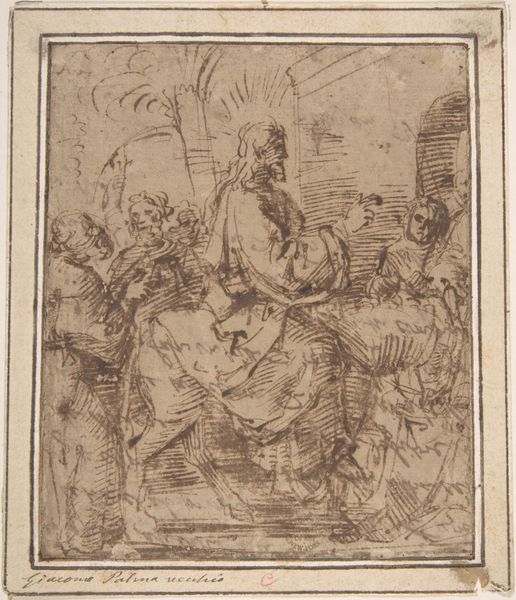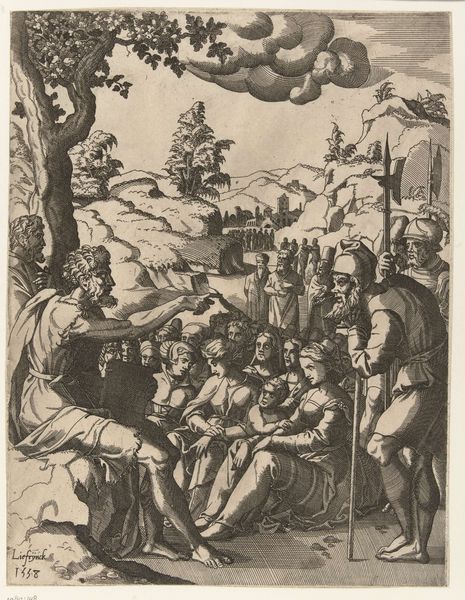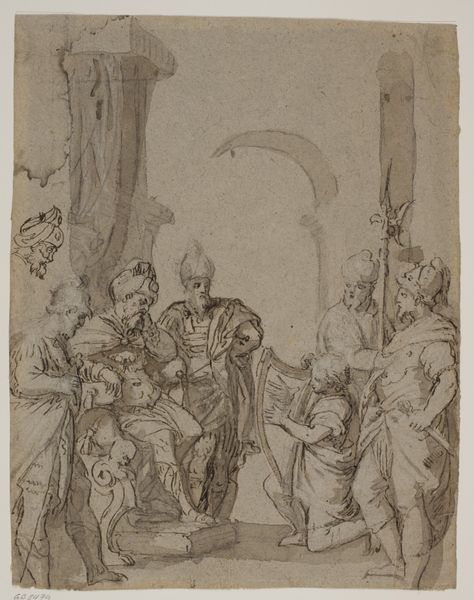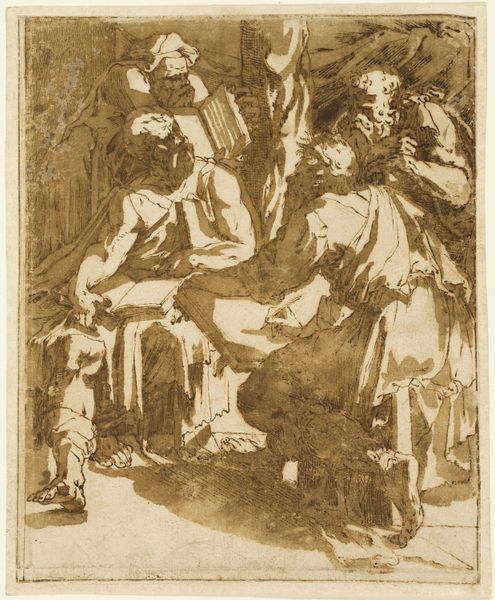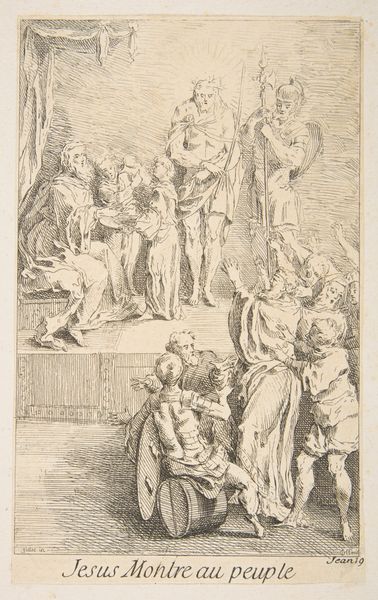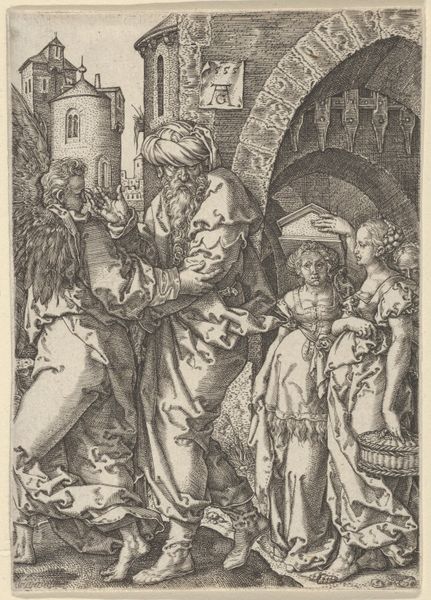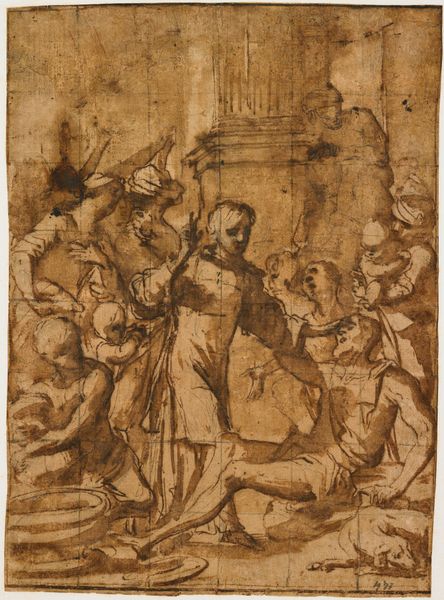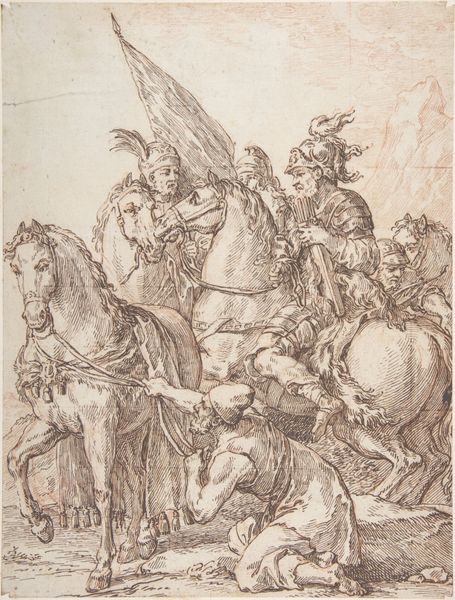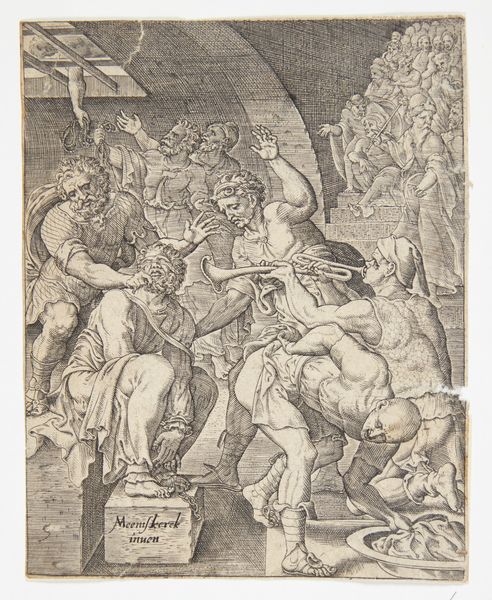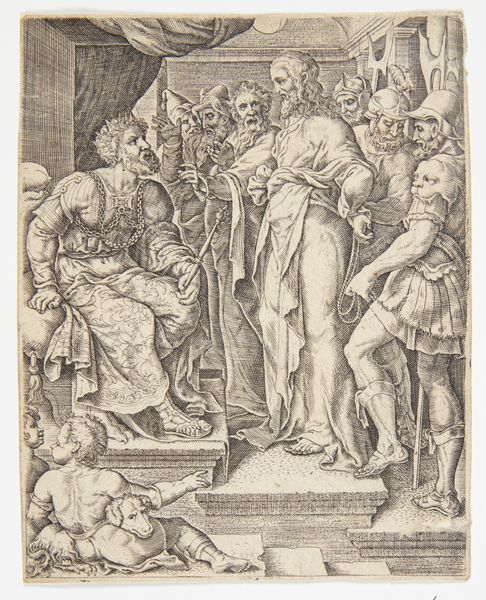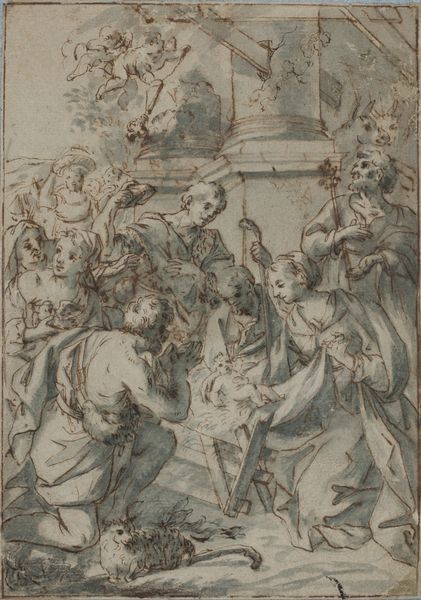
Study for the Armistice between King Francis I of France and Emperor Charles V, fresco in the Palazzo Farnese, Caprarola 16th century
0:00
0:00
drawing, print, paper, ink
#
portrait
#
drawing
# print
#
pencil sketch
#
landscape
#
charcoal drawing
#
figuration
#
paper
#
11_renaissance
#
ink
#
coloured pencil
#
horse
#
watercolour illustration
#
history-painting
#
italian-renaissance
Dimensions: Sheet: 7 3/4 x 5 in. (19.7 x 12.7 cm)
Copyright: Public Domain
Curator: This work before us is a 16th-century study by Taddeo Zuccaro titled, "Study for the Armistice between King Francis I of France and Emperor Charles V, fresco in the Palazzo Farnese, Caprarola." It resides here at the Metropolitan Museum of Art. Editor: My first impression is one of organized power—perhaps even forced power. The sepia tones create a sense of aged authority, and the figures seem almost burdened by their roles within this political display. Curator: Indeed, it is a preparatory drawing, providing insight into the political machinations of the time through Zuccaro's eyes. We see a scene meant to immortalize the reconciliation—however fleeting—between these two powerful rulers. What's fascinating is how this drawing might differ from the final fresco. Editor: Right, thinking about the eventual fresco makes me question what stories and realities get smoothed over in the final product. I wonder about the common people involved, perhaps reluctantly, in manifesting these shows of power. Do we ever see their true feelings of political agreements in art like this? Curator: An excellent question, and one we must always consider. The artist certainly had a patron and a message to convey; however, his decisions about composition and detail tell a nuanced story as well. The inclusion of onlookers, for instance, gives us a glimpse into the social theater of the era. Editor: Thinking about the social implications makes me hyperaware of the fact that all the central figures here are men. We can talk all day about two great men reconciling, but what systems of patriarchy made this all possible and continue to dictate our lives today? It feels almost romanticized here. Curator: Your observations highlight a critical element in understanding history painting of this period. Certainly, the representation of gendered power dynamics, as well as class structures, shaped how such events were memorialized and understood. This drawing, in that light, becomes a valuable document for deconstructing those very systems. Editor: Ultimately, approaching artworks such as these means considering its significance in our own contemporary environment. Who do we give authority to make agreements that shape our existence? And what systems uphold that imbalance? Curator: By interrogating Zuccaro's study and similar works through a modern lens, we stand to gain more perspective about not just this past period but also our present and future world.
Comments
No comments
Be the first to comment and join the conversation on the ultimate creative platform.
